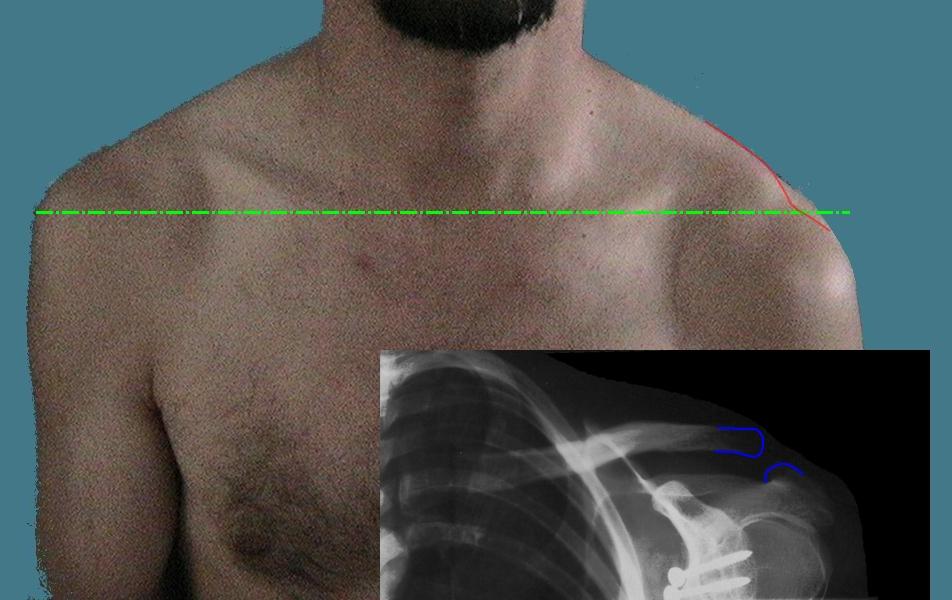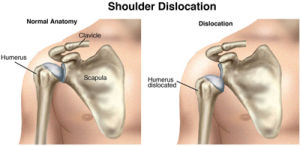A dislocation (or luxation) is when there is an abnormal separation in a joint between two (2) bones. A dislocated joint results in much damage to the surrounding soft tissues including: sprains to ligaments and strains to muscles (particularly the rotator cuff muscles).
A dislocation is often caused by excessive force and can be either a direct or indirect injury. Joints that frequently dislocate are those found in the fingers, and ball and socket joints, such as the shoulder or hip.
Signs and Symptoms of Dislocation
There are many signs (what can be seen) and symptoms (what a casualty feels) of a dislocated joint. These signs and symptoms include:
- pain at the joint
- swelling around the joint
- bruising around the joint or just below the joint (gravity may cause the bruise to appear below the ankle for example)
- deformity of the joint
- tenderness around the joint
- inability to move the joint properly
Often these injuries are readily identifiable as the athlete often will clutch at the joint and allow the rest of the limb to hang, or support their limb quickly to immobilise it. For example, a rugby player who dislocates his shoulder will be seen holding his shoulder, while the arm hangs down or supporting his elbow while bending over.
Management of Dislocation
Management of a dislocation requires:
- DRSABCD
- do not move the joint
- check for circulation past the joint
- support the area
- apply ice packs
DO NOT try to relocate the dislocation.



